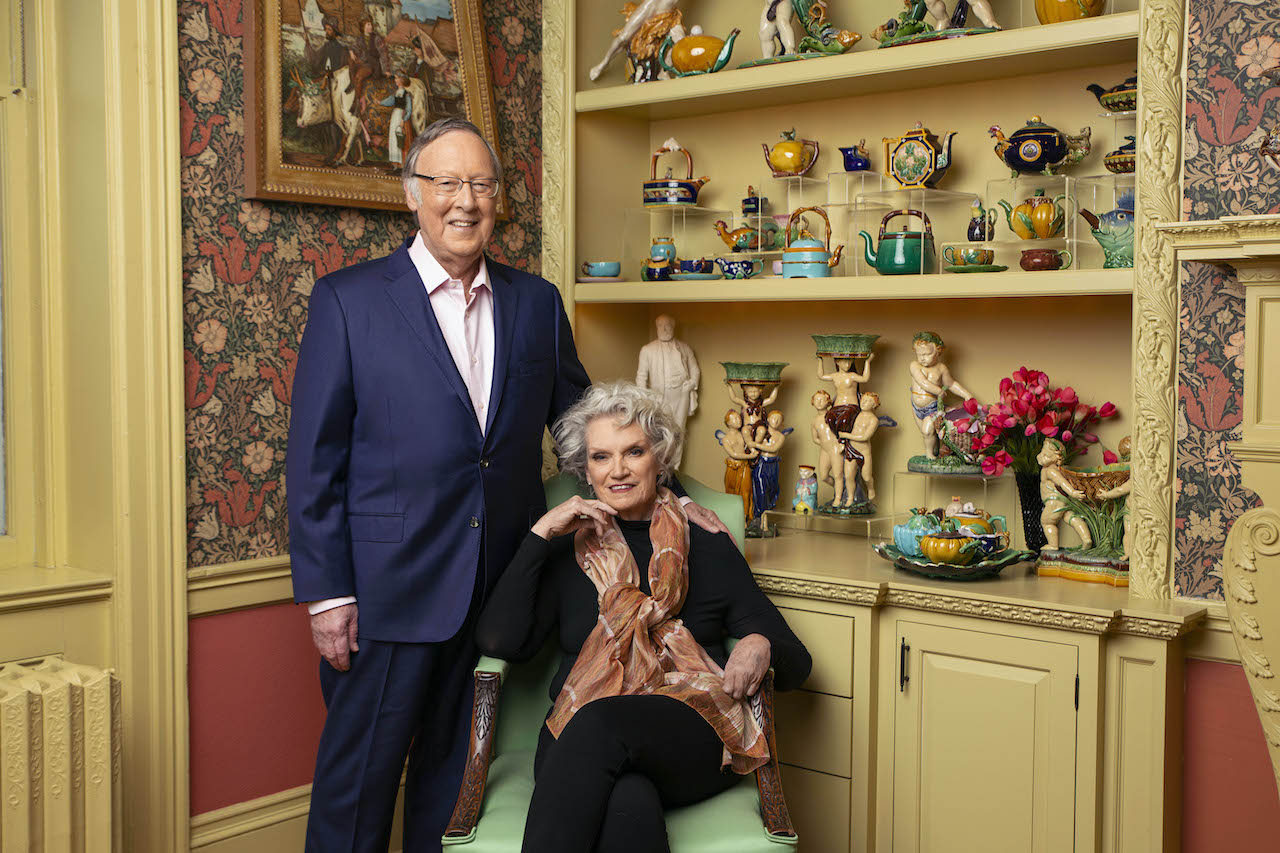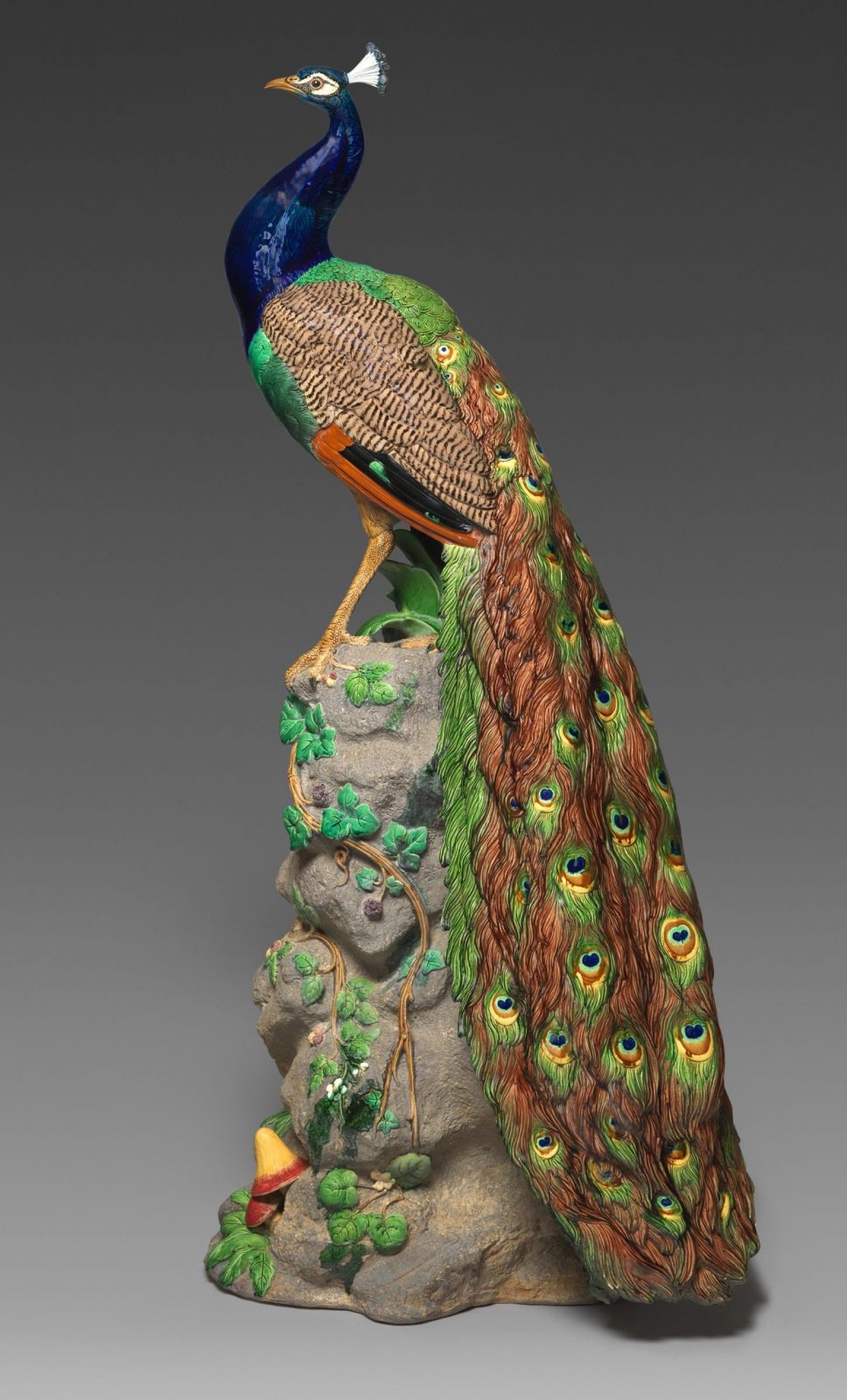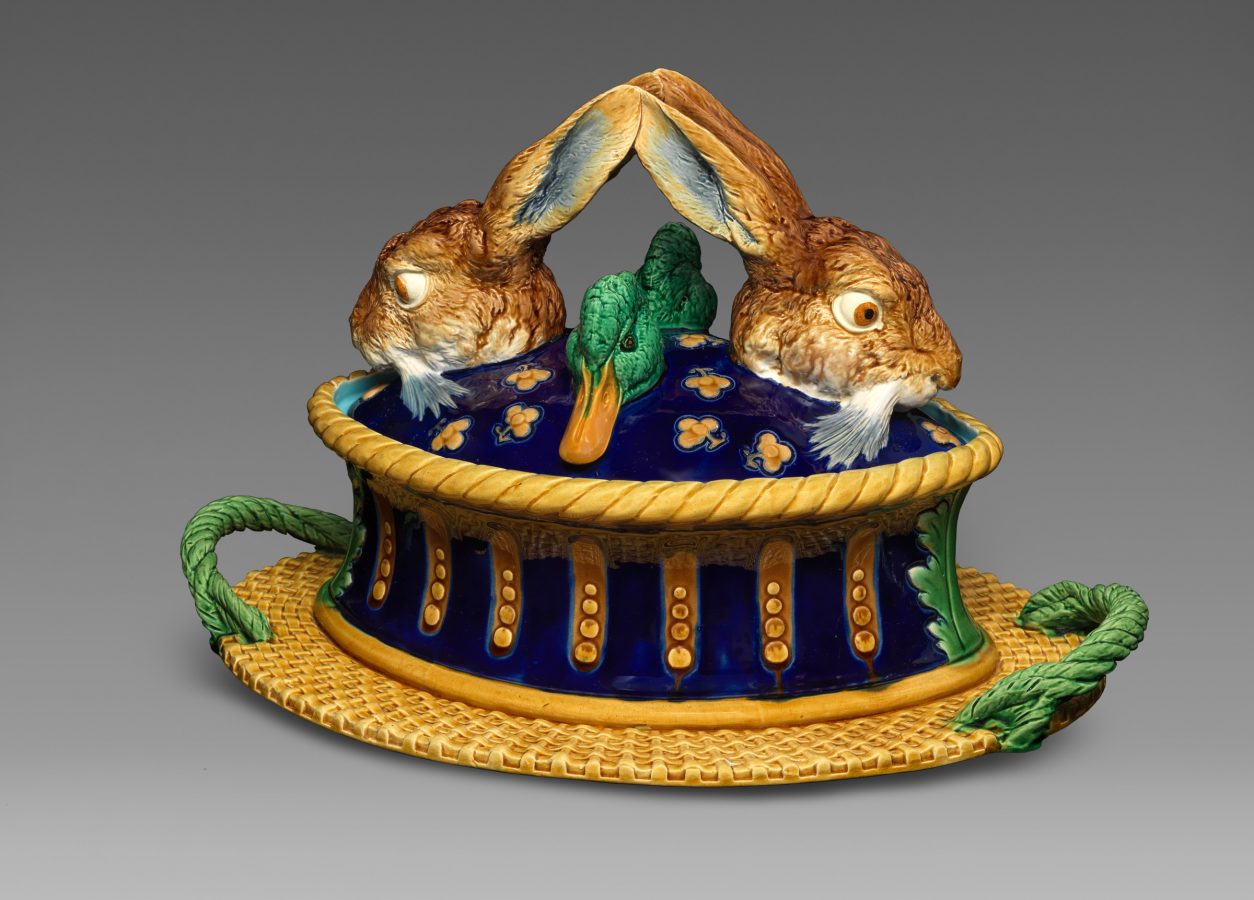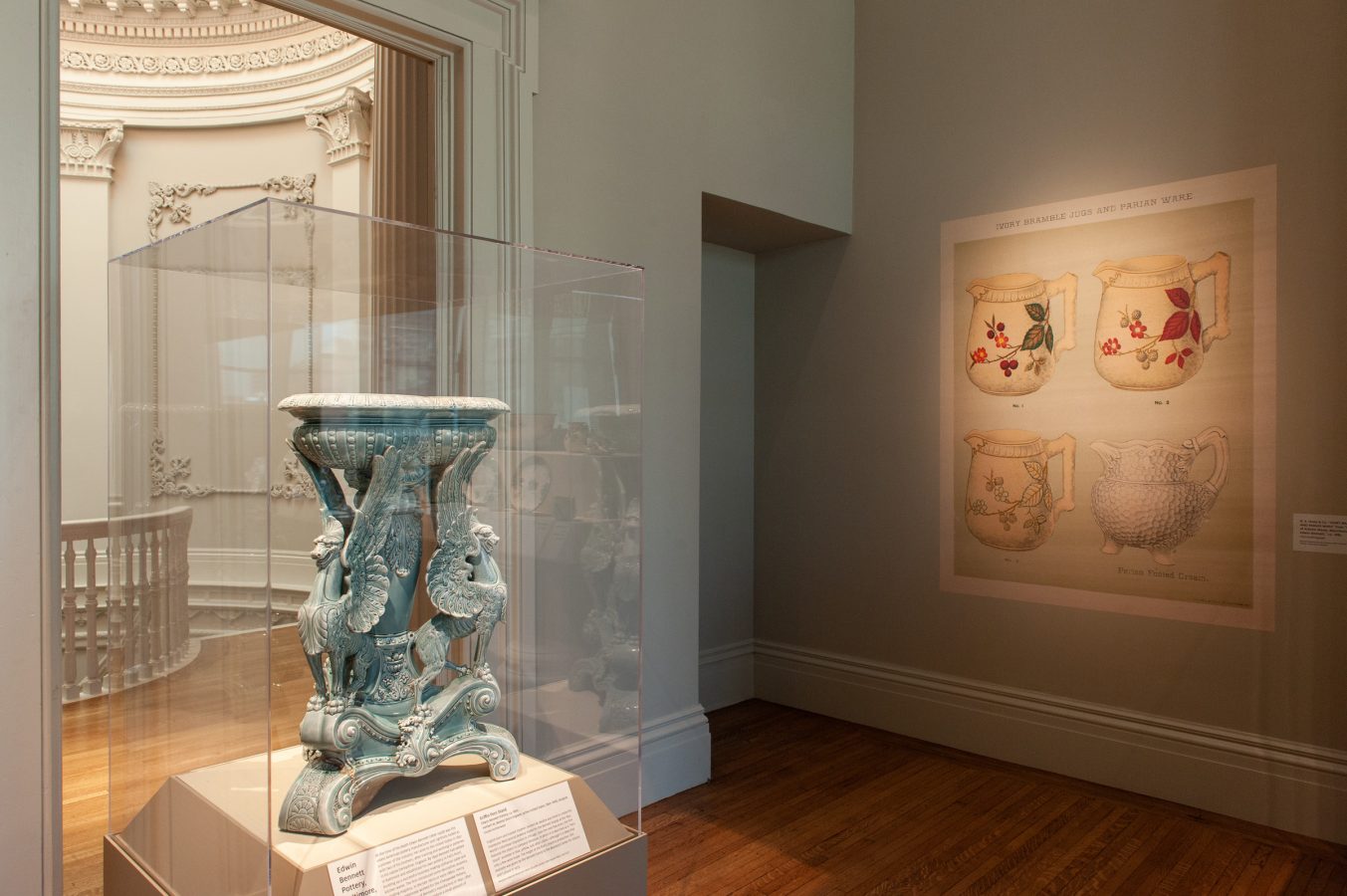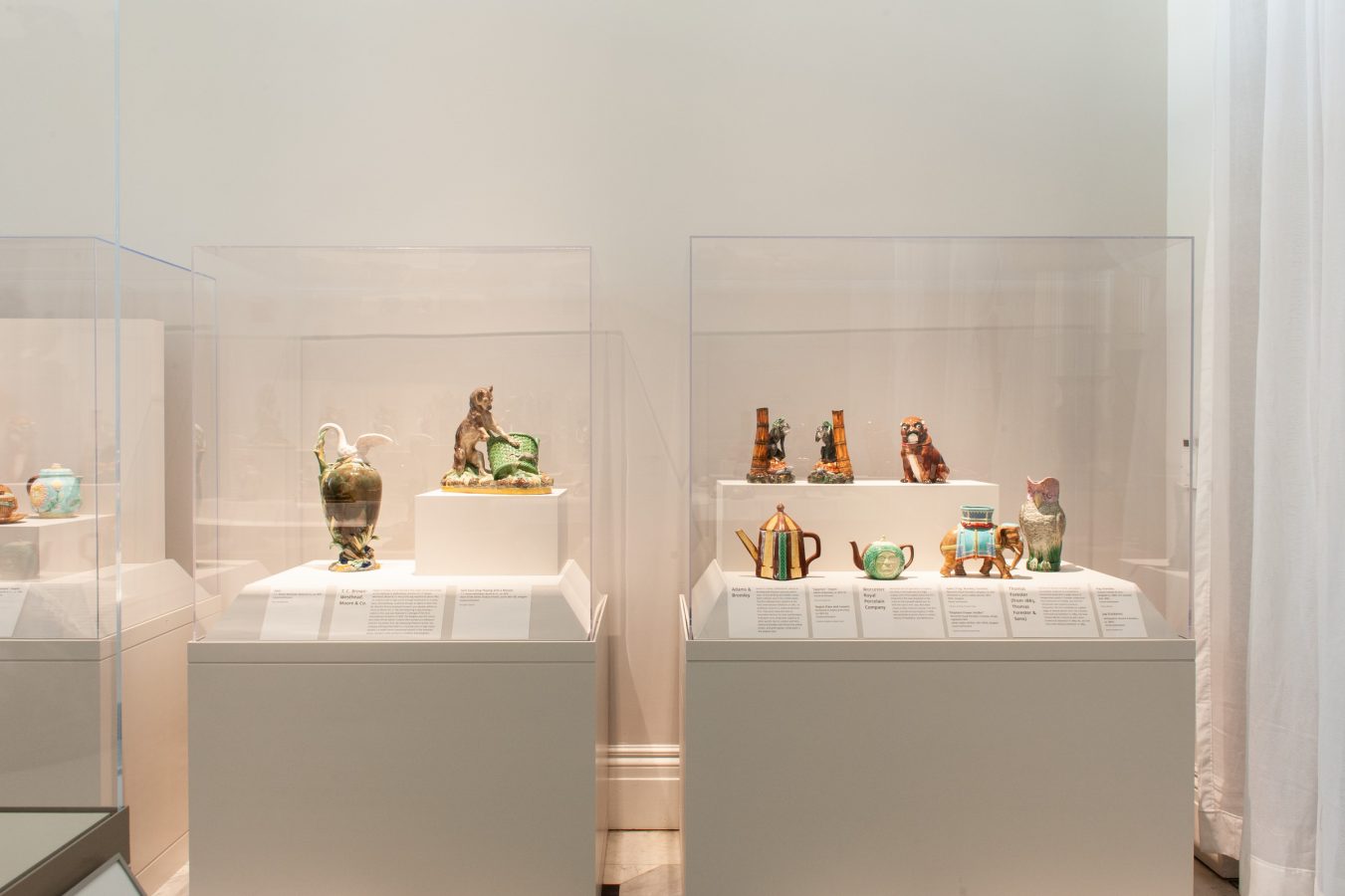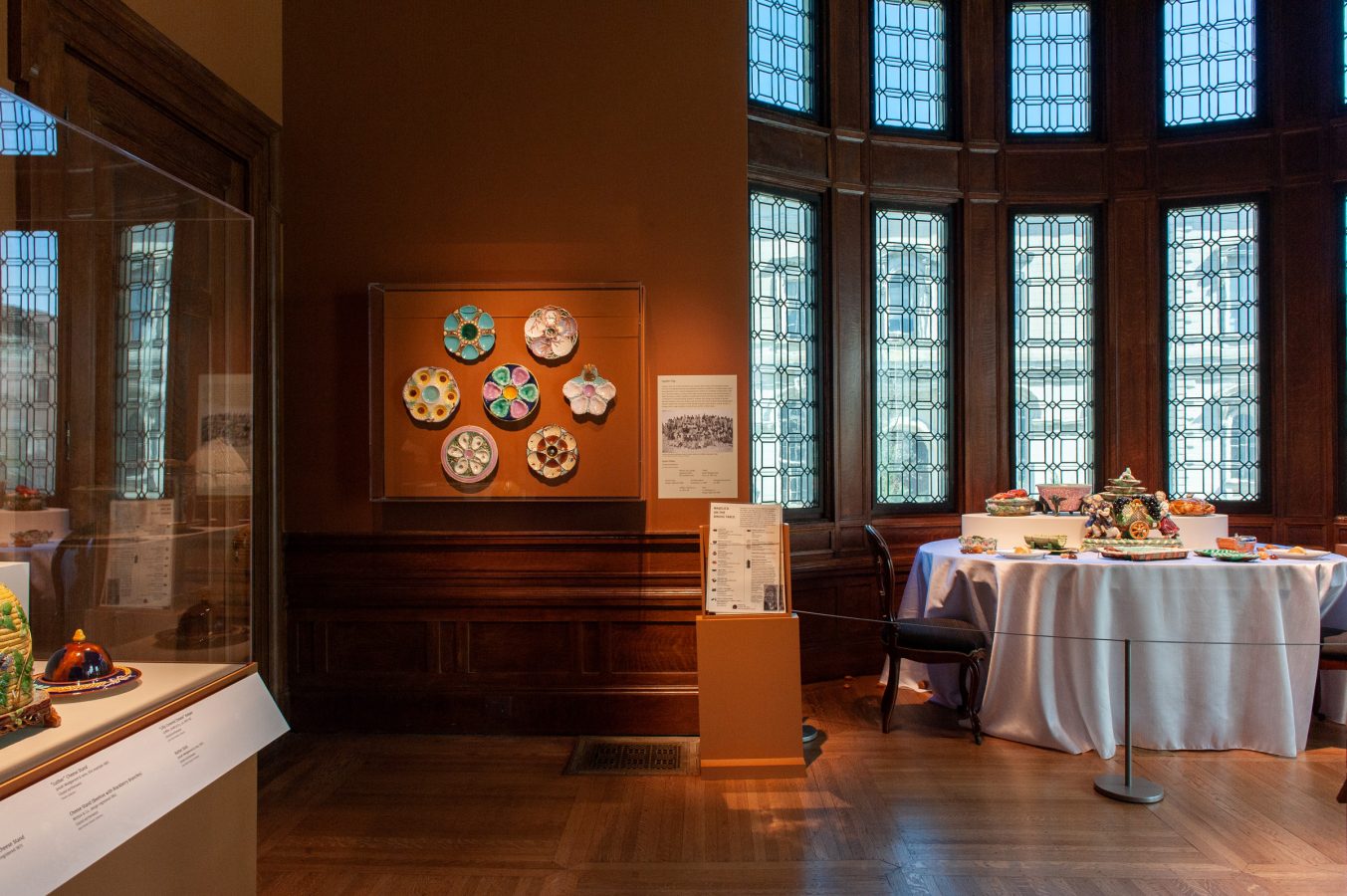You didn’t start collecting majolica until you had already moved into your current home. How much has your house, which was built during the Victorian era and then expanded by previous owners, influenced your collecting? You have very high ceilings, built-ins you’ve added, and enormous windows which are great for showcasing art.
DE: The house demands it. It says, I want a Minton cobalt jardiniere vase, now! And I want it here! It really did feel like the house was commanding it. The house we had in Guilford was more modern. It was built in the ‘20s in sort of Italian style with big rooms, big windows. And the collection would’ve looked fine in there, but there was something about the character of this house. Which is interesting because when we first saw this house, we went home laughing. We hated it. We bought it because of the property and thought, well, we’ll learn to live with it. Little did we know that it was going to whip us into training.
You’ve said a few times that when you started collecting twenty-five years ago, majolica was expensive already, but we’ve also talked about how this is an art form that’s been mocked. Is it valuable because there may be only twelve in the world of the monumental pieces? Is the scarcity what keeps the price so high?
DE: Good question.
I just wanted to make sure I wasn’t missing something.
DE: It’s a small but determined group of people.
PE: It was collected in the ‘80s by a few people. But when that Forbes article was written, that started some people like us collecting… At its peak, the Society had over 500 members all over the world. Prices started rising in the early 2000s and crashed with the recession. They’re coming back up but haven’t fully recovered. The best pieces hold their value.
DE: The collecting group is so small that if, let’s say you’ve got a game pie dish, and it’s one of the great game pie dishes, but another one was on the market a year ago. Chances are, it’s not going to find a new buyer.
PE: Your generation are not collectors.
DE: Your children are.
PE: Neither of my kids collect—
DE: Anything. They’re sort of religiously opposed to it.
Do you think collecting skips a generation? When your daughter for example sees this room, does she not want to inherit it?
DE: I think she’s very glad it’s going to the Walters, and she doesn’t have to worry about it. And so is our son.
Following up on this idea, at what point in collecting art do space and storage become an issue?
DE: We’re past that.
Is your solution having more exhibitions where the work is currently out of your house and in the museums?
PE: We keep saying we run out of space, and then we find space, and now it is getting serious. If you walk through our house, I can’t think of a room that doesn’t have a piece. We’ve been very, very fortunate with grandkids and dogs that we haven’t lost too many pieces.
I have to say, I’ve been to a few collectors’ homes, and I do appreciate, as an artist, the people who live with the work because I’m sure that’s what the craftspeople who made this work would want. They wouldn’t want it to be in storage.
PE: Yeah. Unfortunately, there are some collectors who don’t do this, which I think is a shame. But if you don’t share it…
DE: It gets kind of dead.
PE: We try to show our collection to whoever wants to come see it.
In the spirit of sharing your collection with a larger audience, you’ve offered the entire collection to the Walters so they can select what they would like. Can you talk about your choice to work with only one museum?
PE: One of the reasons we’re very appreciative that the Walters wants to take as many pieces as they have is because it will give a sense of the collector’s eye. We’ve had offers from other museums, but they only want to take the really high-end pieces and go.
DE: That knocks the head off the body of the collection. One thing that I am excited about is the Walters will take things that relate to things they already have in their collection. Whether it’s philosophically, culturally, or aesthetically. That makes me feel really good about the collection’s future. It’s comforting.



